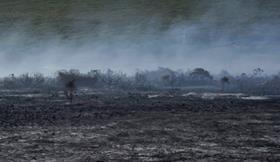
The Fresh Produce Safety Centre (FPSC) has released a fact sheet on bushfires.
The fact sheet provides information about how bushfires can impact the safety and quality of fresh fruit and vegetables.
It also outlines what fruit and vegetable growers in Australian and New Zealand can do in the event of a bushfire.
“FPSC has produced this fact sheet to help businesses understand the food safety risks associated with bushfires,” said FPSC chair Andreas Klieber.
“With bushfires currently raging in Western Australia, this fact sheet is a timely resource. While the other parts of Australia and New Zealand are not currently facing bushfires, it is important that our industry prepares for the next round of bushfires, whenever they come.
“This is the latest in a series of fact sheets produced by FPSC aimed to help the fresh produce industry in our region improve food safety, by preparing for and responding to food safety risks.”
The author of the fact sheet, Tina Bell of the Sydney Institute of Agriculture at the University of Sydney, said one of the key risks of bushfires for growers is the impact of fire on water sources.
“Water sources, including dams, creeks and rivers, can be contaminated by dead animals after a bushfire, and may also be impacted by chemical spills (due to damaged infrastructure) and increased sedimentation,” Bell explained.
“Growers need to be aware that bodies of smaller animals (e.g., mice and rats, small native animals) may pose just as much of a risk of microbial contamination to water sources as larger, more obvious animal carcasses (e.g., sheep, cows, kangaroos).
“Sediment slugs, resulting from ash and topsoil being washed into water bodies, are another risk after bushfire, as the fire may remove surrounding stabilising vegetation. Sediment slugs can promote the growth of toxic algal blooms in water sources,” she said.
“Growers should continue to check water quality (microbiological and chemical) after a bushfire, as contamination from dead animals (large and small) and increased sedimentation is a continued risk.”
This fact sheet follows the recent release of FPSC’s fact sheet onfood defence.



